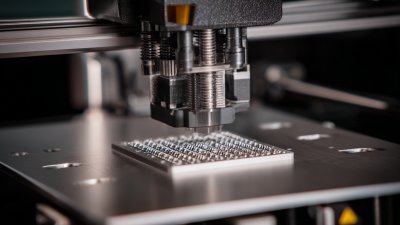
Top 5 Laser Sintering 3D Printers You Need to Know for High Quality Prototyping
In the rapidly evolving landscape of additive manufacturing, laser sintering 3D printers have emerged as pivotal tools for high-quality prototyping. As industry experts highlight the advantages of this technology, renowned figure Dr. Emily Turner, a leading researcher in 3D printing innovations, states, “The precision and efficiency of laser sintering 3D printers make them indispensable for creating complex prototypes that meet the demands of modern engineering.” This sentiment resonates with many within the industry, underscoring the need for effective solutions in product development.
As we approach 2025, it becomes essential to explore the top laser sintering 3D printers that are transforming the way businesses and designers approach prototyping. These machines not only provide unparalleled accuracy but also enhance the material properties of prototypes, facilitating faster time-to-market cycles. In this context, understanding the cutting-edge technologies and capabilities of the leading laser sintering 3D printers will empower practitioners to make informed decisions in their creative processes. By examining the top contenders in this category, we aim to illuminate the future possibilities of laser sintering technology in high-quality prototype production.
Read more »
 By:Oliver - November 22, 2025
By:Oliver - November 22, 2025
Exploring the Future of 3D Metal Printing Technology and Its Impact on Manufacturing Efficiency
The advancements in 3D printing technology have revolutionized various industries, particularly through the emergence of 3D printers that print metal. As manufacturers seek innovative ways to enhance production efficiency and reduce costs, metal 3D printing stands out as a pivotal solution. According to Dr. John Smith, a leading expert in the field of additive manufacturing, "The integration of 3D printers that print metal into industrial processes not only streamlines production but also enables customization and complexity that were previously unimaginable."
As we explore the future of metal 3D printing, it becomes evident that this technology is poised to redefine manufacturing paradigms. By utilizing materials more effectively and minimizing waste, businesses can achieve greater operational efficiency. Furthermore, the ability to create intricate designs without the constraints of traditional manufacturing methods opens new avenues for innovation and product development.
In the coming years, we can expect to see Continued advancements in 3D printing techniques that will enhance the capabilities of 3D printers that print metal. The intersection of this technology with artificial intelligence and machine learning will further optimize manufacturing processes, making them faster, smarter, and more environmentally sustainable. As industries evolve, the impact of metal 3D printing on manufacturing efficiency will undoubtedly shape the future of production.
Read more »
 By:Ethan - November 19, 2025
By:Ethan - November 19, 2025

The Ultimate Guide to Choosing the Best Desktop SLS Printer for Your 3D Printing Needs
As the demand for high-quality 3D printing continues to grow across various industries, selecting the right equipment becomes crucial for achieving optimal results. Among the various technologies available, the desktop SLS printer stands out for its ability to produce intricate and durable parts through selective laser sintering. According to a recent report by SmarTech Analysis, the market for SLS 3D printing is projected to reach $1.2 billion by 2025, highlighting the increasing adoption of this technology in sectors such as aerospace, automotive, and healthcare. However, with numerous options available, choosing the best desktop SLS printer requires careful consideration of factors such as build volume, material compatibility, and user-friendliness. This guide aims to provide valuable insights and expert recommendations to help you navigate the complexities of selecting a desktop SLS printer that meets your specific 3D printing needs.
Read more »
 By:Ethan - November 12, 2025
By:Ethan - November 12, 2025
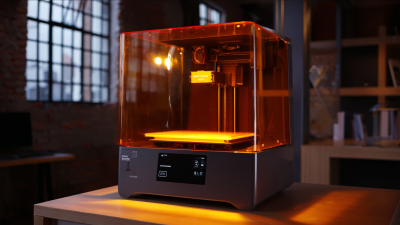
Exploring the Future of 3D Printing with DLP Resin Technology
As we stand on the brink of a technological revolution, the future of manufacturing and design is being reshaped by innovations like DLP resin technology. The emergence of the DLP resin printer has opened up new avenues for rapid prototyping and intricate design, significantly enhancing the capabilities of 3D printing. Unlike traditional methods, DLP (Digital Light Processing) utilizes a digital light projector to cure liquid resin layer by layer, resulting in highly detailed and accurate prints. This process not only accelerates production times but also allows for the creation of complex geometries that were previously unimaginable. As industries from aerospace to healthcare begin to embrace this technology, the potential applications of DLP resin printing continue to expand, underscoring its role as a transformative force in the future of manufacturing. In this exploration, we will delve deeper into the benefits and future prospects of DLP resin technology, illuminating why it is poised to become a cornerstone of modern fabrication.
Read more »
 By:Oliver - November 8, 2025
By:Oliver - November 8, 2025
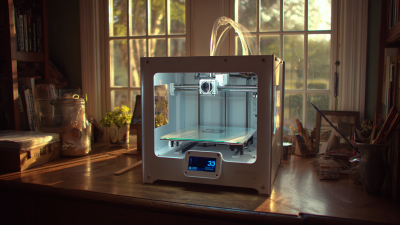
Unlocking the Future of Creativity with 3D Printers for Every Home
In recent years, the advent of the 3D printer has revolutionized the way we think about creativity and production in our homes. According to a report by the International Data Corporation, the global market for 3D printing is expected to reach $49 billion by 2025, highlighting a rapid increase in accessibility and usage of 3D printers among consumers. This technology empowers individuals to design and create custom objects, ranging from household items to intricate art pieces, thus fostering an unprecedented level of creativity. As 3D printers become more affordable and user-friendly, they not only spark innovation but also enable a DIY culture that encourages sustainability through localized production. With the continued integration of 3D printing into everyday life, the potential for transforming homes into creative hubs is immense, making it essential to explore the implications and possibilities that lie ahead.
Read more »
 By:Oliver - November 4, 2025
By:Oliver - November 4, 2025

Revolutionizing Oral Care: The Impact of Dental 3D Printers on Modern Dentistry
The advent of dental 3D printers is poised to revolutionize modern dentistry, offering innovative solutions that enhance precision and efficiency in oral care. According to a recent report by MarketsandMarkets, the dental 3D printing market is projected to reach $3.4 billion by 2025, growing at a compound annual growth rate (CAGR) of 20.6%. This surge in adoption of dental 3D printers is driven by their ability to produce customized dental solutions, such as crowns, bridges, and aligners, with unparalleled accuracy and speed. Furthermore, 3D printing technology enables dental professionals to streamline their workflows, reduce patient turnaround times, and minimize material waste. As the technology continues to evolve, it is expected to further transform treatment methodologies, ultimately enhancing patient outcomes and reshaping the landscape of oral healthcare.
Read more »
 By:Oliver - October 27, 2025
By:Oliver - October 27, 2025
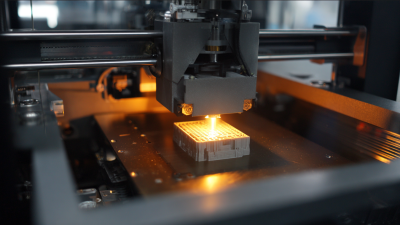
Why Laser Sintering 3D Printers Are Revolutionizing Manufacturing Efficiency by 30%?
The advent of the laser sintering 3D printer marks a significant turning point in the manufacturing landscape, offering unparalleled efficiency and precision that traditional methods struggle to match. By leveraging advanced laser technology to fuse powdered materials layer by layer, these printers are capable of producing intricate designs with exceptional detail while greatly reducing waste. As industries increasingly seek to optimize production processes and enhance product quality, the integration of laser sintering 3D printers has been shown to drive manufacturing efficiency up by an impressive 30%. This article explores the transformative impact of laser sintering technology on various manufacturing sectors, providing insights and practical tips for businesses looking to embrace this innovation. The ability to create complex geometries, shorten lead times, and customize production on demand underscores why adopting laser sintering 3D printing is no longer just an option, but a necessity for forward-thinking manufacturers aiming to stay competitive in a rapidly evolving market.
Read more »
 By:Nathan - October 22, 2025
By:Nathan - October 22, 2025
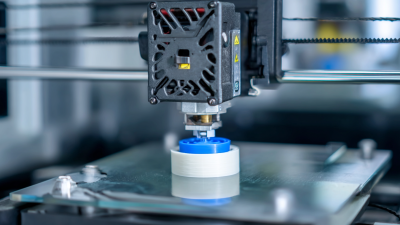
Exploring the Impact of Polymer 3D Printers at the 138th China Import and Export Fair 2025
The 138th China Import and Export Fair in 2025 presents a significant platform for showcasing advancements in technology, particularly in the realm of polymer 3D printers. According to a report by MarketsandMarkets, the global 3D printing market is forecasted to reach $62.79 billion by 2026, growing at a CAGR of 23% from 2021. This growth is largely driven by the increasing adoption of polymer 3D printers across various industries, including aerospace, automotive, and healthcare. The versatility, efficiency, and cost-effectiveness of polymer-based additive manufacturing are revolutionizing production processes by enabling rapid prototyping and customized solutions. As key players in the industry converge at the fair, the impact of polymer 3D printers on the supply chain, production efficiency, and product innovation will be a focal point for discussions and demonstrations, spotlighting their transformative potential in manufacturing and design.
Read more »
 By:Oliver - October 18, 2025
By:Oliver - October 18, 2025
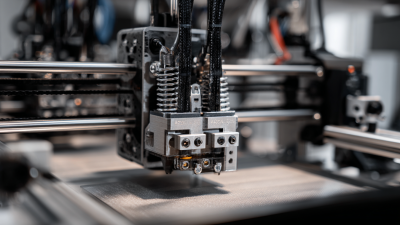
Digital Revolution Best 3D Printers That Print Metal Transforming Manufacturing Efficiency
The advent of 3D printing technology has ushered in a digital revolution, significantly transforming manufacturing processes across various industries. Among the most notable advancements are **3D printers that print metal**, which have gained considerable traction in recent years. According to a report by MarketsandMarkets, the metal 3D printing market is projected to grow from $0.6 billion in 2021 to $3.5 billion by 2026, representing a staggering compound annual growth rate (CAGR) of 42.6%. This rapid expansion underscores the growing demand for innovative manufacturing solutions that enhance efficiency while reducing material waste. By leveraging metal 3D printing, companies can produce complex geometries with unprecedented speed and precision, enabling them to meet the challenges of modern production requirements. As we explore the best 3D printers that print metal, we will delve into how these cutting-edge machines are redefining the landscape of manufacturing efficiency.
Read more »
 By:Ethan - October 14, 2025
By:Ethan - October 14, 2025
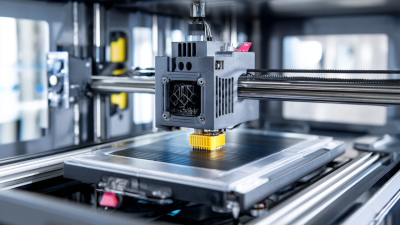
How to Optimize Your Workflow with a Professional 3D Printer: Insights from Industry Experts
The landscape of manufacturing is undergoing a significant transformation, largely driven by advances in technology, particularly through the use of a professional 3D printer. A recent report by Smithers Pira indicates that the global market for 3D printing is expected to reach $41 billion by 2027, reflecting a compound annual growth rate of 23%. This rapid growth underscores the increasing role of 3D printing in various industries, including aerospace, automotive, and healthcare. Industry experts emphasize that optimizing workflows with a professional 3D printer not only enhances production efficiency but also allows for greater design flexibility and innovation. By integrating 3D printing into their operations, companies can significantly reduce cycle times and costs while being able to prototype and produce complex geometries that traditional manufacturing methods cannot achieve. This article aims to provide insights and strategies for maximizing the potential of professional 3D printers, enabling businesses to stay competitive in an evolving marketplace.
Read more »
 By:Oliver - October 10, 2025
By:Oliver - October 10, 2025
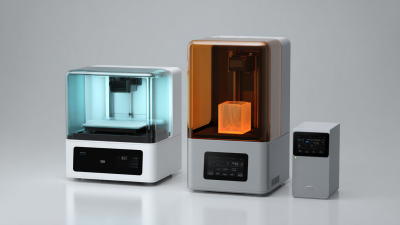
How to Choose the Right Dental 3D Printer for Your Practice Needs
In today's rapidly evolving dental landscape, choosing the right dental 3D printer is crucial for practices aiming to enhance their efficiency and patient outcomes. With a variety of models and technologies available, dental professionals are faced with the challenge of selecting a printer that aligns with their specific operational needs, budget, and desired capabilities. This decision-making process not only impacts the workflow but also the quality of care provided to patients. Factors such as printing speed, material compatibility, and ease of use are integral to making an informed choice. In this guide, we will explore key considerations and practical tips that will help you navigate the complex options available in the market, ensuring that your investment in a dental 3D printer will serve your practice effectively and enhance your commitment to providing top-notch dental services.
Read more »
 By:Ethan - October 7, 2025
By:Ethan - October 7, 2025
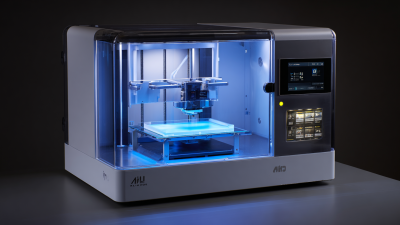
Unlocking the Future Best 8K 3D Printer for Global Buyers
As the demand for advanced manufacturing technologies continues to surge, the 3D printing industry is witnessing a remarkable transformation, with 8K 3D printers leading the charge. According to a recent report by MarketsandMarkets, the global 3D printing market is projected to reach $34.8 billion by 2026, growing at a CAGR of 21.0% from 2021, primarily driven by innovations in resolution and speed. The emergence of 8K resolution in 3D printing not only enhances the precision of the printed objects but also expands the potential applications across various sectors, including healthcare, aerospace, and automotive. This technological advancement allows manufacturers to create intricate designs and prototypes with unparalleled detail, thus positioning the 8K 3D printer as a key player in the future of production. In this blog, we will explore the best 8K 3D printers available for global buyers, unlocking the future of 3D printing technology.
Read more »
 By:Ethan - October 3, 2025
By:Ethan - October 3, 2025
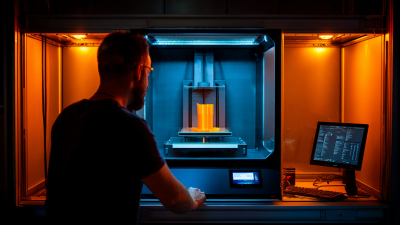
How to Choose the Right SLS Printer for Your Business: A Data-Driven Guide
In today's rapidly evolving manufacturing landscape, the choice of the right SLS printer is crucial for businesses aiming to stay competitive and innovative. Selective Laser Sintering (SLS) technology offers unparalleled advantages, including the ability to produce complex geometries and robust prototypes. However, with a myriad of SLS printers available on the market, selecting the ideal model for your specific business needs can be a daunting task. This guide aims to simplify the decision-making process by providing a data-driven approach, focusing on key factors such as build volume, material compatibility, and cost-effectiveness. Whether you are a startup exploring 3D printing capabilities or an established enterprise seeking to enhance your production capabilities, understanding the nuances of different SLS printers will empower you to make informed choices that align with your objectives and budget.
Read more »
 By:Nathan - September 28, 2025
By:Nathan - September 28, 2025

What is the Future of 3D Printing Machines in Global Manufacturing
The future of 3D printing machines in global manufacturing is poised for transformative growth, driven by advancements in technology and increasing adoption across various industries. According to a report by MarketsandMarkets, the 3D printing market is expected to reach $34.85 billion by 2024, growing at a compound annual growth rate (CAGR) of 25.76% from 2019. This rapid expansion highlights the crucial role that 3D printing machines will play in enhancing production efficiency, reducing waste, and enabling more sustainable manufacturing practices. As industries explore innovative applications—from aerospace and automotive to healthcare and consumer goods—the capabilities of 3D printing machines are redefining traditional manufacturing processes. With ongoing investments in research and development, the potential for customized solutions and localized production is becoming increasingly realistic, promising a future where 3D printing technology is central to the global manufacturing landscape.
Read more »
 By:Ethan - September 24, 2025
By:Ethan - September 24, 2025

Mastering the Basics of Powder 3D Printing with Our Step by Step Guide
As the additive manufacturing landscape evolves, powder 3D printing has emerged as a game-changer across various industries, from aerospace to healthcare. According to a report by MarketsandMarkets, the powder 3D printing market is projected to grow from $1.22 billion in 2021 to $4.18 billion by 2026, showcasing a robust CAGR of 27.3%. This remarkable growth is fueled by advancements in technology and material science, making it crucial for both beginners and experienced practitioners to master the fundamentals of this process. Our step-by-step guide aims to demystify powder 3D printers, providing essential tips and techniques to harness their potential effectively. Whether you're looking to optimize your production processes or explore new design possibilities, understanding the basics will set you on the right path towards successful 3D printing endeavors.
Read more »
 By:Oliver - September 19, 2025
By:Oliver - September 19, 2025